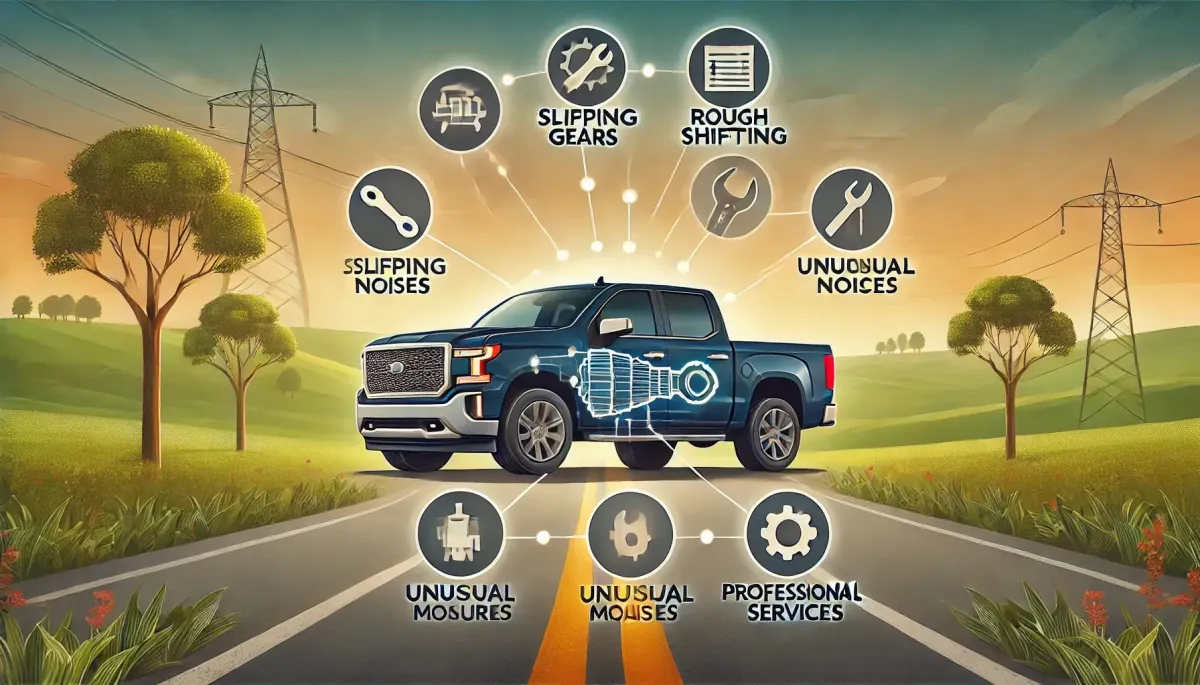
Transmission Troubleshooting: Spotting and Solving Common Issues in Your Pickup Truck
Transmission Troubleshooting: Spotting and Solving Common Issues in Your Pickup Truck
Nothing disrupts a smooth ride like transmission troubles. Whether you're experiencing unusual noises, slipping gears, or delayed shifts, identifying and addressing these issues promptly can save you from expensive repairs and downtime. Imagine driving with confidence, knowing you can tackle any transmission hiccup before it becomes a major problem. Let’s explore some expert advice on how to troubleshoot and resolve common transmission issues in your pickup truck.
Key Points:
Recognizing the Signs of Transmission Problems:
Common Symptoms to Watch For
How Different Issues Manifest
Importance of Early Detection
Diagnosing Transmission Issues:
Tools and Techniques for DIY Diagnosis
Professional Diagnostic Services
Understanding Diagnostic Codes
Common Transmission Problems and Solutions:
Slipping Gears
Rough Shifting
Unusual Noises and Vibrations
Leaking Fluid
Preventive Measures:
Regular Inspection Routines
Best Practices for Prolonging Transmission Life
When to Upgrade or Replace Your Transmission
Real-World Examples:
Recognizing Signs:
Jane noticed a delay in shifting gears and brought her truck in for an inspection, catching a major issue early.
Bob ignored a slight noise, which eventually led to a costly repair when his transmission failed on a long trip.
Diagnosing Issues:
Tom used a diagnostic scanner to identify a transmission code, saving time and money by addressing the problem himself.
Alice relied on professional services to get a comprehensive diagnosis, ensuring all potential issues were identified.
Common Problems and Solutions:
Mark experienced slipping gears and resolved it by changing the transmission fluid and filter.
Sarah had rough shifting issues due to a faulty solenoid, which she replaced after a thorough diagnostic process.
Preventive Measures:
Jim follows a strict maintenance schedule, ensuring his transmission remains in top condition.
Emma upgraded her transmission after consistent issues, enjoying improved performance and reliability.
In-Depth Analysis:
Recognizing the Signs:
Symptoms to Watch For: Look for unusual noises, slipping gears, delayed shifts, and fluid leaks. Early detection can prevent severe damage.
How Issues Manifest: Understand how different problems present themselves, such as grinding noises indicating worn gears or slipping gears pointing to low fluid levels.
Importance of Early Detection: Catching issues early can save you from expensive repairs and prolonged downtime.
Diagnosing Transmission Issues:
DIY Diagnosis: Use tools like diagnostic scanners, fluid dipsticks, and visual inspections to identify problems.
Professional Services: For complex issues, professional diagnostics provide a comprehensive understanding of the problem.
Diagnostic Codes: Learn to interpret diagnostic codes to pinpoint specific transmission issues.
Common Transmission Problems and Solutions:
Slipping Gears: Often caused by low fluid levels or worn components. Check fluid levels and condition regularly.
Rough Shifting: Can be due to faulty solenoids, worn gears, or improper fluid. Regular maintenance and timely replacements can prevent this.
Unusual Noises and Vibrations: Indicative of worn gears, bearings, or other internal components. Immediate inspection and repair are crucial.
Leaking Fluid: Check for damaged seals or gaskets. Address leaks promptly to prevent further damage.
Preventive Measures:
Regular Inspection: Conduct routine checks of fluid levels, color, and consistency. Inspect for leaks and unusual noises.
Prolonging Transmission Life: Follow maintenance schedules, avoid overloading, and ensure smooth driving habits.
Upgrading or Replacing: When persistent issues arise, consider upgrading to a more robust transmission system or replacing the existing one for better performance.
Practical Applications:
Step-by-Step Troubleshooting Guide:
Initial Inspection: Check fluid levels and look for leaks. Listen for unusual noises while the engine is running.
Use a Diagnostic Scanner: Connect to your truck’s OBD-II port to retrieve diagnostic codes.
Visual and Manual Inspection: Inspect transmission components for wear and tear. Check for any loose or damaged parts.
Tool Recommendations:
Diagnostic Scanner: Essential for retrieving and interpreting transmission codes.
Transmission Jack: Necessary for safely lifting your truck during inspections or repairs.
Fluid Pump: Helps in checking and changing transmission fluid efficiently.
Tips and Tricks:
Listen Carefully: Unusual sounds are often the first indicator of transmission problems.
Monitor Shifting Patterns: Delayed or hard shifts can signal underlying issues.
Regular Maintenance: Preventive maintenance is the best way to avoid major transmission problems.
Conclusion:
Spotting and solving transmission issues early can save you time, money, and frustration. By recognizing the signs, using the right tools for diagnosis, and understanding common problems, you can keep your pickup truck running smoothly and reliably. Regular maintenance and prompt action are your best defenses against transmission troubles.
Call to Action:
Have you noticed any strange noises or shifting issues in your truck recently? Don’t wait until it’s too late—start troubleshooting today! Share your experiences and tips in the comments below, and let’s keep the conversation going. Your insights could help fellow truck owners avoid costly repairs!
Ready to experience the TTS difference?
Visit prebuilttrans.com to learn more about our services or to schedule an appointment or call +1 385-462-8458 for more info! We're dedicated to keeping your pick-up truck running in tip-top shape!
Disclaimer: This blog post is intended for informational purposes only and should not be interpreted as professional advice. Always consult with a qualified mechanic or transmission specialist for specific recommendations regarding your vehicle.
© 2024 Truck Transmission Specialists. All rights reserved.

